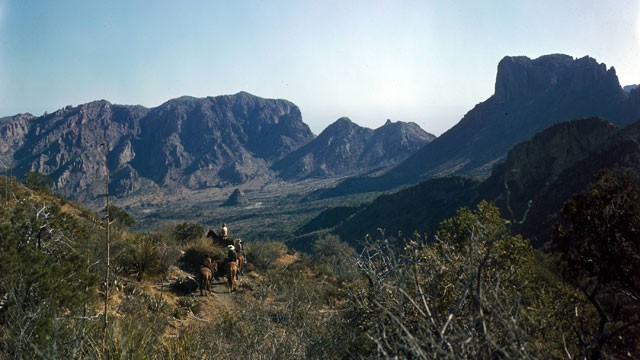Results 1 to 1 of 1
Thread Information
Users Browsing this Thread
There are currently 1 users browsing this thread. (0 members and 1 guests)
-
01-03-2013, 11:43 PM #1
TX - Border Patrol Opens Unmanned Crossing on U.S.-Mexico Border
By CRISTINA COSTANTINI
Jan. 2, 2013
abc news

A photo of Big Bend National Park, where the Customs and Border Protection (CBP) intend to build the first unmanned border station on the U.S.-Mexico border (Credit National Park Service)
Get ready for the very first "unmanned" border station on the U.S.-Mexico border. Slated to open at the end of this month, the Big Bend National Park in Texas will be staffed by, you guessed it, computers.
The station will be equipped with machines that can scan citizenship documents and conduct live video interviews with U.S. Customs and Border Protection agents at a station in El Paso, Texas, Tech News Daily reports. While Mexican citizens will be able to use the crossing, U.S. officials maintain that Americans tourists to the national park are more likely to do so. When a similar CBP crossing was open in the same location more than a decade ago, few Mexicans used it. In 2002, because of increased security measures, U.S. officials closed the original crossing, forcing tourists to travel more than 100 miles to the next nearest crossing to get to Mexico, according to Nextgov.
For anyone worried about the effectiveness of an unmanned station, federal officials maintain that the technology is both effective and cost-efficient, given the number of border crossers in the area. Natural barriers, such as the Rio Grande river, already make illegal crossings more difficult in the region than in other segments of the border, Nextgov reports. Cameras and surveillance tools will be set up in the vicinity, like at any other border station and Customs and Border Protection (CBP) officials will also be able to travel from the El Paso station should the need arise.
Still, the proposal has some critics. The CBP released a report last week indicating that a former superintendent of the national park, Jose A. Cisneros, had concerns about opening the crossing. A crossing in the same location was closed after September 11, 2001 for security reasons. Cisneros says while it was open some "illegal activity also took place." He fears that "drug cartels will view the crossing as a "back-door" to the United States," according to the report.
While similar unmanned border crossings are already implemented successfully on the Canadian border, this will be the first time a totally computerized station is built on the U.S.-Mexico border. Although this isn't exactly the first high-tech solution CBP has used to monitor the Southern border.
Drones and crowd-sourced surveillance programs are just some of the recent technologies the agency has implemented. Agents in Texas even established a program in 2008 called BlueServo, by which volunteers around the world could sit at their computers and watch surveillance cameras set up across the Texas-Mexico border. When one of such volunteers spots movements, they can report the encounter for agents to investigate.
But the BlueServo program seemed to have largely failed to meet expectations in its first years of implementation. The El Paso Times reported that the project was supposed to trigger more than a thousand BlueServo-related arrests in the first year, but in the first six months, only three arrests were made based on the program. BlueServo has cost Texans at least $2 million.
The new automated border crossing will cost $3.7 million to U.S. taxpayers, but CBP says that the crossing will actually pay back into Texas' economy by drawing tourists to visit Big Bend National Park and spend more on lodging accommodations on the U.S.-side of the border.
One Old Vet
U.S.-Mexico Border Gets First Unmanned Border Crossing - ABC NewsSupport our FIGHT AGAINST illegal immigration & Amnesty by joining our E-mail Alerts at https://eepurl.com/cktGTn


 LinkBack URL
LinkBack URL About LinkBacks
About LinkBacks




 Reply With Quote
Reply With Quote


New poll shows rising Latino support for border wall, mass...
04-18-2024, 06:50 PM in General Discussion